The Washington Bach Consort at National Presbyterian Church
By Stephen Brookes • The Washington Post • May 5, 2014
Is there anything a composer wouldn’t give for a bit of Johann Sebastian Bach’s musical DNA? Bach’s own children were the winners of that genetic lottery, of course, and perhaps none more so than second son Carl Philipp Emanuel, who rose to superstar status in his lifetime, influenced composers from Haydn to Beethoven — and then vanished almost completely from view. But with his 300th anniversary this year, C.P.E Bach’s wildly inventive music is coming back into the spotlight, and on Sunday the Washington Bach Consort put on a program at the National Presbyterian Church that revealed just how innovative this composer really was.  The younger Bach's music straddles the Baroque and Classical eras, and the afternoon opened with “Heilig” (Wq 218) for chorus and orchestra, a work so deeply connected to tradition that it even quotes from his father’s music. But it was the next work, the “Sinfonia in D Major” (Wq 183/1), that highlighted the forward-looking “expressive” style that he's best remembered for. Full of rich contrasts, colorful harmonies and sudden shifts of rhythm and mood, the sinfonia is still a surprising, even edgy work.
The younger Bach's music straddles the Baroque and Classical eras, and the afternoon opened with “Heilig” (Wq 218) for chorus and orchestra, a work so deeply connected to tradition that it even quotes from his father’s music. But it was the next work, the “Sinfonia in D Major” (Wq 183/1), that highlighted the forward-looking “expressive” style that he's best remembered for. Full of rich contrasts, colorful harmonies and sudden shifts of rhythm and mood, the sinfonia is still a surprising, even edgy work.
To these ears, though, Consort director J. Reilly Lewis seemed to tone down much of Bach’s extroverted drama — the intense, punching rhythms that open the piece came off like gentle caresses, and the rest of the piece seemed out to sooth rather than delight. (That may have been partly due to the soft-voiced period instruments that the Consort uses, whose sound can be swallowed in enormous spaces.) But the next work— the cantata “Anbetung dem Erbarmer” (Wq 243) — came off more strongly, helped by fine, detailed arias by the four soloists, particularly soprano Emily Noël and bass Steven Combs.
If the first half of the program was a bit on the tame side, the closing work — the spectacular Magnificat in D Major (Wq 215) from 1749 — made up for it with a vengeance. Lewis turned in a crisp, gutsy performance with an almost physical sense of purpose and obvious delight in showcasing Bach’s anything-goes musical personality. Matthew Loyal Smith’s refined tenor voice, and the rich countertenor of Roger O. Isaacs, added depth to this full-blooded reading of a work that deserves to be much more widely heard.
Ann Schein at the National Gallery of Art
By Stephen Brookes • The Washington Post • May 1, 2014
Ann Schein is one of the most impressive — if relatively unsung — pianists in America, so her recital at the National Gallery of Art’s West Garden Court on Wednesday was a distinct and all-too-rare pleasure. The concert was part of a Gallery series built around Cecelia Porter’s new book, “Five Lives in Music: Women Performers, Composers, and Impresarios from the Baroque to the Present” — which devotes a chapter to Schein — and Porter, a music critic who writes for The Washington Post, was on hand to plug the book and introduce the pianist.
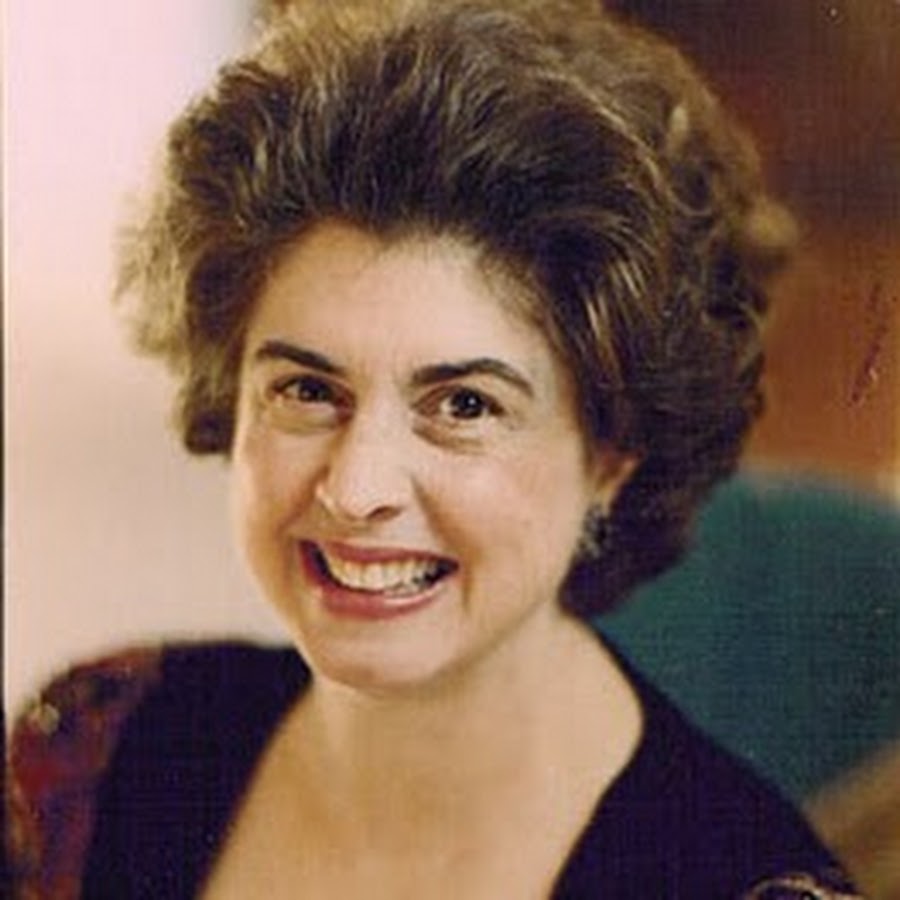 Ann ScheinThe introduction never really got to the heart of what makes Schein’s playing so compelling and full of character. But perhaps only the music can do that, and, as quickly became clear in Maurice Ravel’s elegant “Sonatine,” there’s little question that Schein is a pianist of the first rank. Probing, insightful, balancing delicacy with great power, Schein turned in a performance that shimmered with light, with a kind of effortless naturalness in every note. You could not wish for more.
Ann ScheinThe introduction never really got to the heart of what makes Schein’s playing so compelling and full of character. But perhaps only the music can do that, and, as quickly became clear in Maurice Ravel’s elegant “Sonatine,” there’s little question that Schein is a pianist of the first rank. Probing, insightful, balancing delicacy with great power, Schein turned in a performance that shimmered with light, with a kind of effortless naturalness in every note. You could not wish for more.
Schein is in her 70s now, but her technique shows little sign of fading. And even the thickest musical tangles of Claude Debussy’s “L’isle joyeuse” came off with impeccable clarity. Debussy wrote the piece at the start of a love affair, and Schein captured its intoxicating, even rapturous spirit in a reading that never lacked for excitement. Chopin’s Piano Sonata #3 in B minor, which closed the program, was just as vivid but even more complex and nuanced, from the glittering Scherzo to the quiet pathos of the Largo to the surging Finale. Schein turned in a deeply integrated and thoughtful performance and rewarded the standing ovation with a quiet and understated encore, Chopin’s posthumous Etude in A flat Major.
Birmingham Contemporary Music Group at the Library of Congress
By Stephen Brookes • The Washington Post • April 13, 2014
The celebrated British composer Oliver Knussen was in town last week for a series of concerts and workshops at the Library of Congress, and it was impossible to come away without a renewed appreciation of his profound impact on contemporary music — not only as a composer, but also as a conductor and curator. That impact was clear Friday night, when the Birmingham Contemporary Music Group 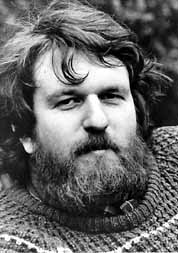 Oliver Knussen(joined by pianist Huw Watkins) put on an insightful, carefully chosen program that tied Knussen’s music to chamber works from the past hundred years — and featured the world premiere of a fine new piece from the American composer Marc Neikrug.
Oliver Knussen(joined by pianist Huw Watkins) put on an insightful, carefully chosen program that tied Knussen’s music to chamber works from the past hundred years — and featured the world premiere of a fine new piece from the American composer Marc Neikrug.
Benjamin Britten was only a teenager when he wrote his “Phantasy, Op. 2,” but you’d never suspect it; it’s a work of warm and sometimes unsettling beauty for oboe and string trio, and Melinda Maxwell played the songlike oboe line (which seemed to float over an often martial, drum-like pulse) with great tenderness. That youthful work was followed by Elliott Carter’s “Epigrams,” written just before the composer’s death two years ago at 103. Age never really diminished Carter’s gigantic mind, and these 12 compressed, complex works are full of surprises and sharp-edged wit — although it’s hard not to hear them as a sort of farewell, and poignant in their own dry-eyed way.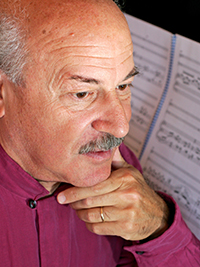 Marc NiekrugNeikrug’s “Tiger’s Nest” for piano trio (commissioned by the Library and dedicated to Knussen) takes its title from a Buddhist monastery perched on a remote cliff in Bhutan. It’s a place Neikrug says leaves you with “a very particular and poignant feeling,” and the same could be said of the music, which evokes a sense of timelessness and immense space, where natural forces erupt and fall away in a constantly shifting interplay; a kind of meditation on the universe.
Marc NiekrugNeikrug’s “Tiger’s Nest” for piano trio (commissioned by the Library and dedicated to Knussen) takes its title from a Buddhist monastery perched on a remote cliff in Bhutan. It’s a place Neikrug says leaves you with “a very particular and poignant feeling,” and the same could be said of the music, which evokes a sense of timelessness and immense space, where natural forces erupt and fall away in a constantly shifting interplay; a kind of meditation on the universe.
Hans Werner Henze’s luminous “Adagio adagio” from 1993 and Frank Bridge’s “Piano Trio No. 2” — a work of lyrical modernism from 1929 — made up the rest of the program. But to these ears, it was Knussen’s own “Cantata (Triptych, Part 3)” for oboe and string trio that provided the most colorful and engaging music of the evening. Like Carter, Knussen writes exceptionally concise and intricate music but with far more charm and natural warmth, and “Cantata” proved to be an absolutely beguiling work. The Birmingham players — who performed with refined musicianship all evening — gave it a spirited and spectacularly detailed reading.
Naoko Takada at the National Gallery of Art
By Stephen Brookes • The Washington Post • March 31, 2014
Naoko Takada may be among the best classical marimbists on the planet, but, as she showed at the National Gallery of Art on Sunday night, she has the heart of a jazz musician, too. In a recital that ranged from Bach to tangos to complex contemporary works, Takada seemed to dance with her marimba as much as play it, and she brought a kind of spontaneous, playful charm — maybe even a little flirtatiousness — to almost everything she played.
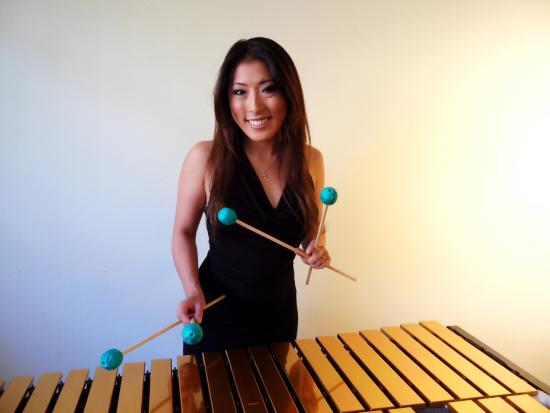 There’s not a lot of classical music for the marimba, but its woody, soft-edged sound translates well, and “Choro No. 1” — a jazzy work originally for guitar by the Argentinian composer Augusto Marcellino — took on a rich, sensual power in Takada’s hands. Her own improvisations on the familiar Japanese folk song “Sakura” (“Cherry Blossoms”), though, were even more impressive. Shimmering, impressionistic, delicately colored, Takada’s playing seemed to conjure a whirlwind of petals in a weightless and constantly changing dance.
There’s not a lot of classical music for the marimba, but its woody, soft-edged sound translates well, and “Choro No. 1” — a jazzy work originally for guitar by the Argentinian composer Augusto Marcellino — took on a rich, sensual power in Takada’s hands. Her own improvisations on the familiar Japanese folk song “Sakura” (“Cherry Blossoms”), though, were even more impressive. Shimmering, impressionistic, delicately colored, Takada’s playing seemed to conjure a whirlwind of petals in a weightless and constantly changing dance.
Not everything worked quite as well. Her reading of the gigue from Bach’s Suite No. 2 for cello was rushed and a bit disappointing, especially since it followed a riveting account of Bach’s magnificent “Chaconne” (from the Partita No. 2 in D minor for solo violin), to which she brought thoughtfulness and depth.
But the most striking works of the evening were the ones Takada had commissioned over the past decade. She brought a lyrical touch to Joseph Pereira’s haunting but dancelike “Five Pieces for Solo Marimba,” while Chin Cheng Lin’s “Tango for Naoko” was colorful and almost cinematic in scope, giving Takada a chance to put her virtuosity on full display.
It was Paul Fowler’s “Michiyuki” (“The Road to Death”), though, that provided the most emotionally intense music of the evening. Built around an ancient Japanese tale of a double suicide, it’s a shadowy work full of tolling bells and murmuring ghosts, and at its climax, Takada drew her mallet across her throat as if it were a knife — a theatrical touch that she pulled off with chilling perfection.
Mayuko Kamio and Katherine Chi at the Freer Gallery
By Stephen Brookes • The Washington Post • March 28, 2014
When Japan first opened its doors to European music in the late 19th century, it was love at first sight — first with the great Romantic-era composers, and soon with the impressionism of Debussy and Ravel. The romance has endured, and Thursday night at the Freer Gallery, the young Japanese violinist Mayuko Kamio (with Katherine Chi on piano) explored its legacy, turning in rich, full-blooded accounts of two works by Brahms, some wildly colorful Ravel and music by contemporary Japanese composers that showed how interconnected the two musical cultures have remained.
 Still in her 20s, Kamio is a world-class virtuoso — she won a gold medal at the 2007 International Tchaikovsky Competition — with exceptional power and a fine sense of drama, as she showed in the Scherzo movement from Brahms’s “F-A-E” Sonata. It’s an early work, but still full of Brahmsian melancholy and rolling pathos, which Kamio brought off with great sensitivity. Brahms’s more mature Sonata No. 1 followed, delivered with a ravishing tone and polished to gleaming perfection. Perhaps, to some ears, even a little too perfect. For all the power and virtuosity of Kamio’s playing, she never really seemed to reveal much about herself, and there was little of that sense of spontaneity — the intimate, risk-taking depth — that can make Brahms such a profound human experience.
Still in her 20s, Kamio is a world-class virtuoso — she won a gold medal at the 2007 International Tchaikovsky Competition — with exceptional power and a fine sense of drama, as she showed in the Scherzo movement from Brahms’s “F-A-E” Sonata. It’s an early work, but still full of Brahmsian melancholy and rolling pathos, which Kamio brought off with great sensitivity. Brahms’s more mature Sonata No. 1 followed, delivered with a ravishing tone and polished to gleaming perfection. Perhaps, to some ears, even a little too perfect. For all the power and virtuosity of Kamio’s playing, she never really seemed to reveal much about herself, and there was little of that sense of spontaneity — the intimate, risk-taking depth — that can make Brahms such a profound human experience.
Toshio Hosokawa’s 1994 “Vertical Time Study III” is a rather severe and academic work, built out of spare musical gestures punctuated by periods of silence. It’s unmistakably rooted in late 20th-century European modernism, but it has a distinctively calligraphic and Zen-like beauty, which Kamio brought out in a limpid reading. More immediately charming, though, was Shinichiro Ikebe’s music for the film “Catharsis” — evocative melodies for solo violin that combined folklike simplicity with great sophistication.
But the showstopper of the evening was Maurice Ravel’s gypsy-flavored “Tzigane,” a tour de force for violin full of bluesy bent notes and lavish exoticism. It’s a piece that begs to be played extravagantly, and Kamio and Chi pulled out the stops for a bravura performance that brought the Freer audience to its feet.
Fairfax Symphony Orchestra at Harris Theater
By Stephen Brookes • The Washington Post • March 23, 2014
The Fairfax Symphony Orchestra has built a reputation for vivid, larger-than-life performances, so it was intriguing on Saturday night to hear a scaled-down version of the group in an evening of music for chamber orchestra. And, while the dull acoustics of George Mason University’s Harris Theater didn’t do the players any favors, the program — a thoughtful mix of (mostly) 20th-century works — proved that the FSO can be nearly as powerful in intimate works as it is with blockbusters.
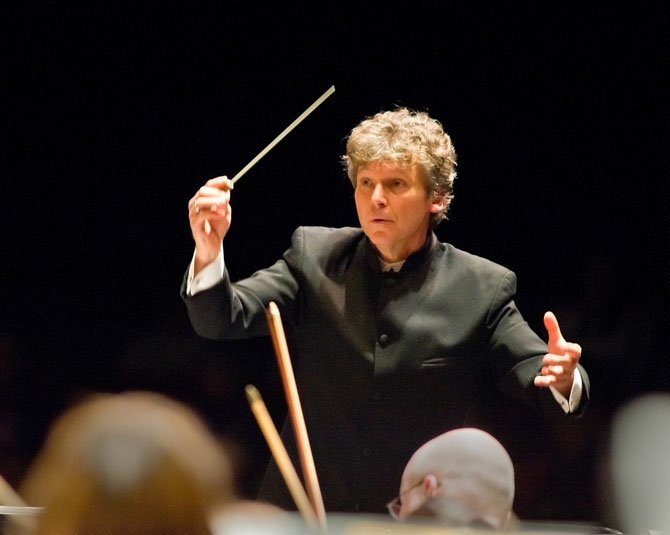 Music director Christopher Zimmerman, not one to coddle the ears, led off with Edgard Varese’s “Octandre,” a work that is still as explosive as it was in its 1924 debut. But after introducing it with great enthusiasm, Zimmerman suddenly pulled his punches. Noting that the modernist masterpiece “might not be for every taste,” he played only the second movement — and asked the audience to e-mail him if we wanted to hear the rest! Well, yes, maestro — we do. Please! Our ears aren’t going to fall off from a little Varese, for heaven’s sake.
Music director Christopher Zimmerman, not one to coddle the ears, led off with Edgard Varese’s “Octandre,” a work that is still as explosive as it was in its 1924 debut. But after introducing it with great enthusiasm, Zimmerman suddenly pulled his punches. Noting that the modernist masterpiece “might not be for every taste,” he played only the second movement — and asked the audience to e-mail him if we wanted to hear the rest! Well, yes, maestro — we do. Please! Our ears aren’t going to fall off from a little Varese, for heaven’s sake.
But after that minor hiccup, the evening got back on track with Benjamin Britten’s diaphanous and darkly beautiful “Nocturne, op. 60.” An eight-part song cycle built on texts from British poets, it’s a sort of reverie that explores the shifting, elusive world that lies on the edges of sleep. Tenor William Hite brought subtlety and appropriate strangeness to this deeply imaginative music, weaving his singing into the orchestral accompaniment with delicacy and great nuance.
Dmitri Shostakovich’s string quartets stand on their own as some of the most compelling and intimate works in the repertoire. That, alas, didn’t stop Russian violist Rudolf Barshai from inflating several of them into versions for chamber orchestra in 1953, and the “Chamber Symphony in D Major” is what results when you dress up the Fourth Quartet in a big string section, winds, horns and even (horrors!) percussion — and then pull out the stops.
It’s enough to make purists pass a gallstone, and while the arrangement itself really isn’t that bad — and the Fairfax players turned in a fine reading — the work stands as a reminder that more, sometimes, can turn out to be less. A spirited reading of Mozart’s ultra-lyrical Symphony No. 27 in G major, written when the composer was barely out of diapers, brought a lively and light-filled close to the evening.
A Winged Victory for the Sullen at the Synagogue at Sixth and I
By Stephen Brookes • The Washington Post • March 20, 2014
Minimalist music isn’t for every taste. The endlessly repeated phrases, the static harmonies, the general sense of cud-chewing — it can all drive the thinking ear crazy. But when it works, it can be close to exalting, as A Winged Victory for the Sullen (a collaboration between composers Dustin O’Halloran and Adam Wiltzie) showed in a fascinating and often luminous performance at the Sixth & I Historic Synagogue on Wednesday night.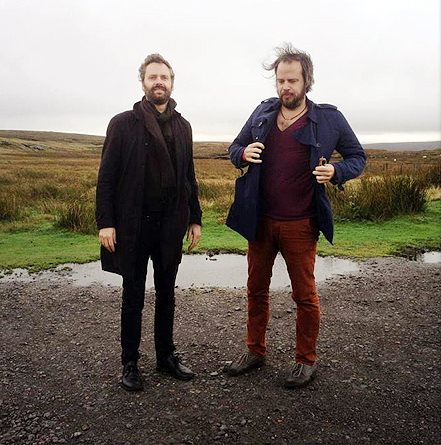 That’s not to say it was an upbeat evening. Opening with “A Symphony Pathetique” from their debut album, O’Halloran (a pianist best known for his score to the film “Marie Antoinette”) and Wiltzie (on keyboard and guitar) were joined by string players from the American Contemporary Music Ensemble and delivered a seamless flow of slow, meditative music throughout the evening, weaving simple musical gestures into pulsing, multilayered clouds of sound that seemed to float — almost weightlessly — over a base of low-pitched drones.
That’s not to say it was an upbeat evening. Opening with “A Symphony Pathetique” from their debut album, O’Halloran (a pianist best known for his score to the film “Marie Antoinette”) and Wiltzie (on keyboard and guitar) were joined by string players from the American Contemporary Music Ensemble and delivered a seamless flow of slow, meditative music throughout the evening, weaving simple musical gestures into pulsing, multilayered clouds of sound that seemed to float — almost weightlessly — over a base of low-pitched drones.
The effect was striking, as if it were the music of some distant celestial orchestra, unfolding with stately and impassive and elemental force. And virtually every work on the program — from the gorgeous “We Played Some Open Chords and Rejoiced” and “Steep Hills of Vicodin Tears” to five pieces from their new project “Atomos” and a reworking of Michael Nyman’s first string quartet — evoked that same sense of gravity and simplicity. This was minimalism in skillful hands.

